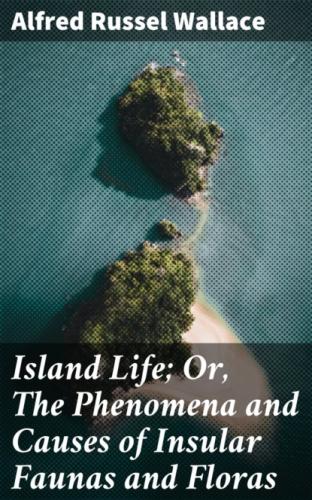Pages 125-168
CHAPTER IX
ANCIENT GLACIAL EPOCHS, AND MILD CLIMATES IN THE ARCTIC REGIONS
Mr. Croll's Views on Ancient Glacial Epochs—Effects of Denudation in Destroying the Evidence of Remote Glacial Epochs—Rise of Sea-level Connected with Glacial Epochs a Cause of Further Denudation—What Evidence of Early Glacial Epochs may be Expected—Evidences of Ice-action During the Tertiary Period—The Weight of the Negative Evidence—Temperate Climates in the Arctic Regions—The Miocene Arctic Flora—Mild Arctic Climates of the Cretaceous Period—Stratigraphical Evidence of Long-continued Mild Arctic Conditions—The Causes of Mild Arctic Climates—Geographical Conditions Favouring Mild Northern Climates in Tertiary Times—The Indian Ocean as a Source of Heat in Tertiary Times—Condition of North America During the Tertiary Period—Effect of High Excentricity on Warm Polar Climates—Evidences as to Climate in the Secondary and Palæozoic Epochs—Warm Arctic Climates in Early Secondary and Palæozoic Times—Conclusions as to the Climates of Secondary and Tertiary Periods—General View of Geological Climates as Dependent on the Physical Features of the Earth's Surface—Estimate of the Comparative Effects of Geographical and Physical Causes in Producing Changes of Climate.
Pages 169-209
CHAPTER X
THE EARTH'S AGE, AND THE RATE OF DEVELOPMENT OF ANIMALS AND PLANTS
Various Estimates of Geological Time—Denudation and Deposition of Strata as a Measure of Time—How to Estimate the Thickness of the Sedimentary Rocks—How to Estimate the Average Rate of Deposition of the Sedimentary Rocks—The Rate of Geological Change Probably Greater in very Remote Times—Value of the Preceding Estimate of Geological Time—Organic Modification Dependent on Change of Conditions—Geographical Mutations as a Motive Power in Bringing about Organic Changes—Climatal Revolutions as an Agent in Producing Organic Changes—Present Condition of the Earth One of Exceptional Stability as Regards Climate—Date of Last Glacial Epoch and its Bearing on the Measurement of Geological Time—Concluding Remarks
Pages 210-237
PART II
INSULAR FAUNAS AND FLORAS
CHAPTER XI
THE CLASSIFICATION OF ISLANDS
Importance of Islands in the Study of the Distribution of Organisms—Classification of Islands with Reference to Distribution—Continental Islands—Oceanic Islands
Pages 241-245
CHAPTER XII
OCEANIC ISLANDS:—THE AZORES AND BERMUDA
The Azores, or Western Islands
Position and Physical Features—Chief Zoological Features of the Azores—Birds—Origin of the Azorean Bird-fauna—Insects of the Azores—Land-shells of the Azores—The Flora of the Azores—The Dispersal of Seeds—Birds as seed-carriers—Facilities for Dispersal of Azorean Plants—Important Deduction from the Peculiarities of the Azorean Fauna and Flora
Pages 246-262
Bermuda
Position and Physical Features—The Red Clay of Bermuda—Zoology of Bermuda—Birds of Bermuda—Comparison of the Bird-faunas of Bermuda and the Azores—Insects of Bermuda—Land Mollusca—Flora of Bermuda—Concluding Remarks on the Azores and Bermuda
Pages 263-274
CHAPTER XIII
THE GALAPAGOS ISLANDS
Position and Physical Features—Absence of Indigenous Mammalia and Amphibia—Reptiles—Birds—Insects and Land-shells—The Keeling Islands as Illustrating the Manner in which Oceanic Islands are Peopled—Flora of the Galapagos—Origin of the Flora of the Galapagos—Concluding remarks
Pages 273-291
CHAPTER XIV
ST. HELENA
Position and Physical Features of St. Helena—Change Effected by European Occupation—The Insects of St. Helena—Coleoptera—Peculiarities and Origin of the Coleoptera of St. Helena—Land-shells of St. Helena—Absence of Fresh-water Organisms—Native Vegetation of St. Helena—The Relations of the St. Helena Compositæ—Concluding Remarks on St. Helena
Pages 292-309
CHAPTER XV
THE SANDWICH ISLANDS
Position and Physical Features—Zoology of the Sandwich Islands—Birds—Reptiles—Land-shells—Insects—Vegetation of the Sandwich Islands—Peculiar Features of the Hawaiian Flora—Antiquity of the Hawaiian Fauna and Flora—Concluding Observations on the Fauna and Flora of the Sandwich Islands—General Remarks on Oceanic Islands
Pages 310-330
CHAPTER XVI
CONTINENTAL ISLANDS OF RECENT ORIGIN: GREAT BRITAIN
Characteristic Features of Recent Continental Islands—Recent Physical Changes of the British Isles—Proofs of Former Elevation—Submerged
